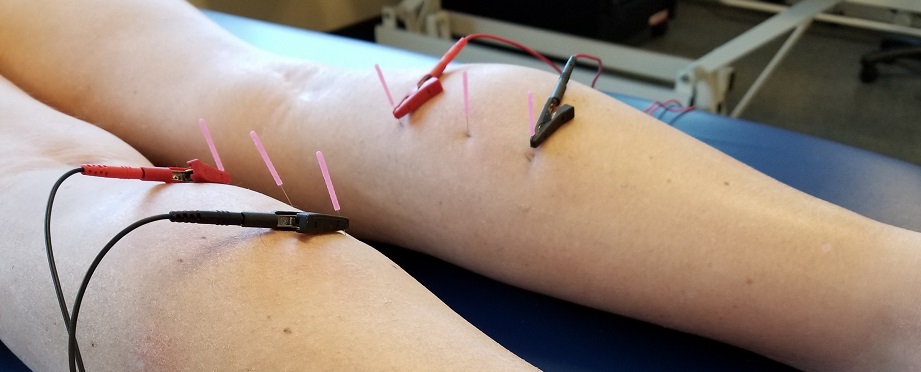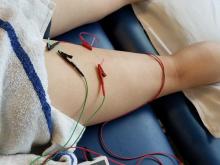Experiencing musculoskeletal pain? Dry needling could help.

Written by Ryan McGuire, a physical therapist at UK Sports Rehabilitation who holds a certification in dry needling.

How many of us have experienced ongoing, activity-limiting musculoskeletal pain? I'm guessing many of you have at some point, and I'm sure some are even experiencing it right now. If you have, then you know the effect it can have physically, mentally and financially. You just wish it would resolve so you can feel better and get back to doing what you need and want to do.
Initially, like many of us, you probably tried to rest and reduce your activity levels to see if that would help. Perhaps you even went to a healthcare professional and received treatment. However, you still are not 100% yet.
Dry needling could be an effective treatment option for you.
Let's explore this further and talk about what you need to know about dry needling.
What is dry needling, and why should I consider it?
Dry needling is a treatment used by physical therapists to treat painful musculoskeletal conditions. The goal of this treatment is to complement other types of treatment offered by physical therapists as a way to ultimately help restore pain-free functional activity.
Dry needling consists of inserting disposable, fine filament needles into painful knots in muscles (trigger points), ligaments or tendons or near nerves. Consider it if your goal is to reduce pain and stimulate a healing response, thereby helping you to return fully to pain-free activity levels.
So, is this acupuncture?

No, dry needling is not acupuncture. Dry needling differs from acupuncture in that it does not attempt to alter internal energy (Qi flow) in the body and does not attempt to treat medical conditions via traditional Chinese meridians.
What are the effects?
Dry needling can lead to pain reduction and increased range of motion, and it can generate a healing response in the tissue treated. These benefits occur due to processes taking place at the site of needle insertion into the tissue being treated, at the neuromuscular junction (if treating a muscle), and in the brain and central nervous system.
This all sounds good so far, but does it hurt?
Most patients worry that it will hurt. Some patients will experience temporary pain during insertion of the needles, but this can be minimized with proper training and with certain techniques utilized by an experienced practitioner. Many patients in our clinic report feeling no pain.
Is it safe?
Yes, it is a safe procedure when completed by a provider certified in dry needling. Minor adverse responses can occur and range from fainting (only 0.3% of treatments), drowsiness and/or dizziness after treatment (1-3% of patients), and slight bruising or minimal bleeding after treatment (15-20% of treatments and is considered a normal response). More serious side effects are rare but can occur (less than one per 10,000 treatments).
Care is taken by the certified professional to avoid the more serious potential complications when working on structures near the chest wall or near the circulatory and nervous systems.
There are also certain conditions that may rule out dry needling for you. Your therapist should screen you for such conditions when determining whether to use dry needling as a viable treatment option.
What types of injuries can this be used on?
Dry needling can be used on muscular trigger points related to a variety of diagnoses, such as low back and neck pain, knee arthritis, and even jaw/temporomandibular joint (TMJ) problems. The research varies on the effects of dry needling for specific conditions, so talk to you physical therapist about your diagnosis and whether dry needling might be a part of your treatment plan.
For more information about UK Sports Rehabilitation or to make an appointment, call 859-257-4576.





